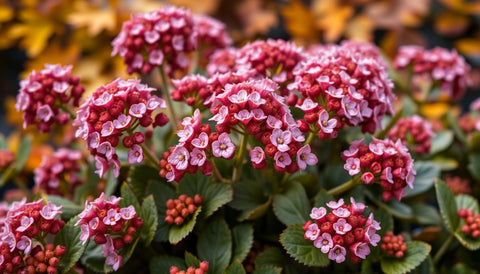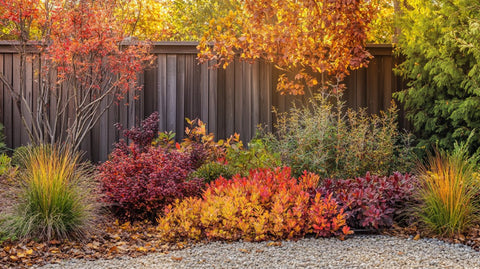Fall-blooming sedums are a fantastic addition to any garden, providing beautiful blooms that extend the season's color well into autumn. In this post, we’ll guide you through the essentials of planting and caring for these resilient plants.

1. Understanding Fall-Blooming Sedum
1.1 What is Sedum?
Sedum belongs to a large family of succulent plants known for their thick, fleshy leaves and clusters of star-shaped flowers. There are many varieties, and they are popular for their resilience and ease of care.
1.2 The Appeal of Fall-Blooming Sedum
Fall-blooming sedums offer late-season interest, bringing color when many other plants are winding down. Their flowers attract pollinators, and their drought-resistant nature makes them a low-maintenance option.
2. Choosing the Right Fall-Blooming Sedum Varieties
2.1 Popular Varieties
- 'Autumn Joy': Known for its sturdy growth and clusters of pink to rusty-red blooms that thrive in fall.
- 'Chocolate Drop': A compact variety with deep purple foliage and pink flowers, perfect for adding contrast to your garden.
- Other noteworthy varieties include 'Matrona', 'Brilliant', and 'Frosty Morn'.
2.2 Factors to Consider
When selecting your sedum, consider your climate (most sedums are hardy in USDA zones 3-9) and garden design preferences, such as desired height and flower color.

3. Preparing to Plant Fall-Blooming Sedum
3.1 Choosing the Right Location
Sedums prefer full sun but can tolerate partial shade. They do best in well-drained, sandy soils, where water doesn't pool.
3.2 Soil Preparation
Test your soil's pH and nutrient levels to ensure proper growing conditions. Amend your soil with compost or sand to improve drainage if necessary.
3.3 Timing for Planting
Sedum can be planted in either spring or early fall. Early fall planting allows the plant to establish roots before the first frost.
4. Planting Fall-Blooming Sedum
4.1 Planting Techniques
Dig a hole twice as wide as the plant's root ball, and plant sedum at the same depth it was in its pot. Space plants according to their mature size, usually 1-2 feet apart.
4.2 Watering After Planting
Water thoroughly after planting, but avoid overwatering. Sedums are drought-tolerant once established and prefer dry conditions.
4.3 Mulching and Protecting
Apply a layer of mulch around the plants to help retain moisture and control weeds, but keep the mulch a few inches away from the stem to prevent rot.

5. Caring for Your Fall-Blooming Sedum
5.1 Watering and Fertilization Needs
Watering is minimal for sedums. During dry spells, water them every few weeks. Fertilize once in early spring with a balanced fertilizer.
5.2 Pruning and Maintenance
Prune in early spring to remove any dead or damaged stems. Deadheading can promote more blooms, though it’s not necessary for sedums to thrive.
5.3 Pest and Disease Management
Sedums are generally resistant to pests but can occasionally attract aphids or mealybugs. Use insecticidal soap to treat infestations. Watch for signs of root rot in overly wet soil.
6. Seasonal Care and Preparation for Winter
6.1 Preparing Sedum for Winter
In late fall, cut back sedum stems after they have died back. Clean up any fallen foliage to prevent disease.
6.2 Mulching for Winter Protection
A light layer of mulch can help protect sedum roots during winter, particularly in colder climates.
6.3 Signs of Successful Care
In spring, your sedum should show healthy new growth. If your plants look strong and vibrant, you’ve done an excellent job preparing them for the winter months.































Comments (0)
There are no comments for this article. Be the first one to leave a message!